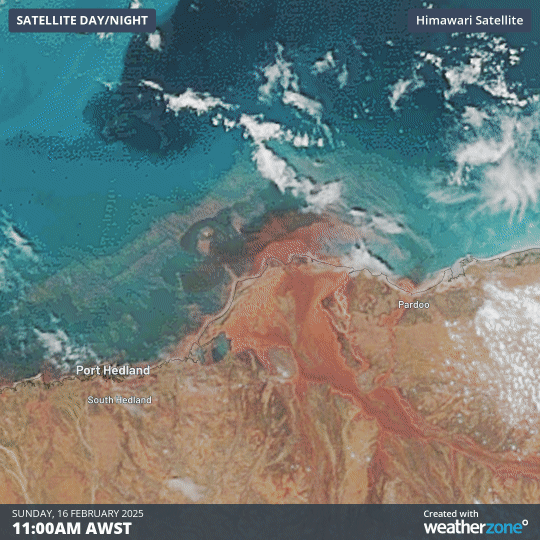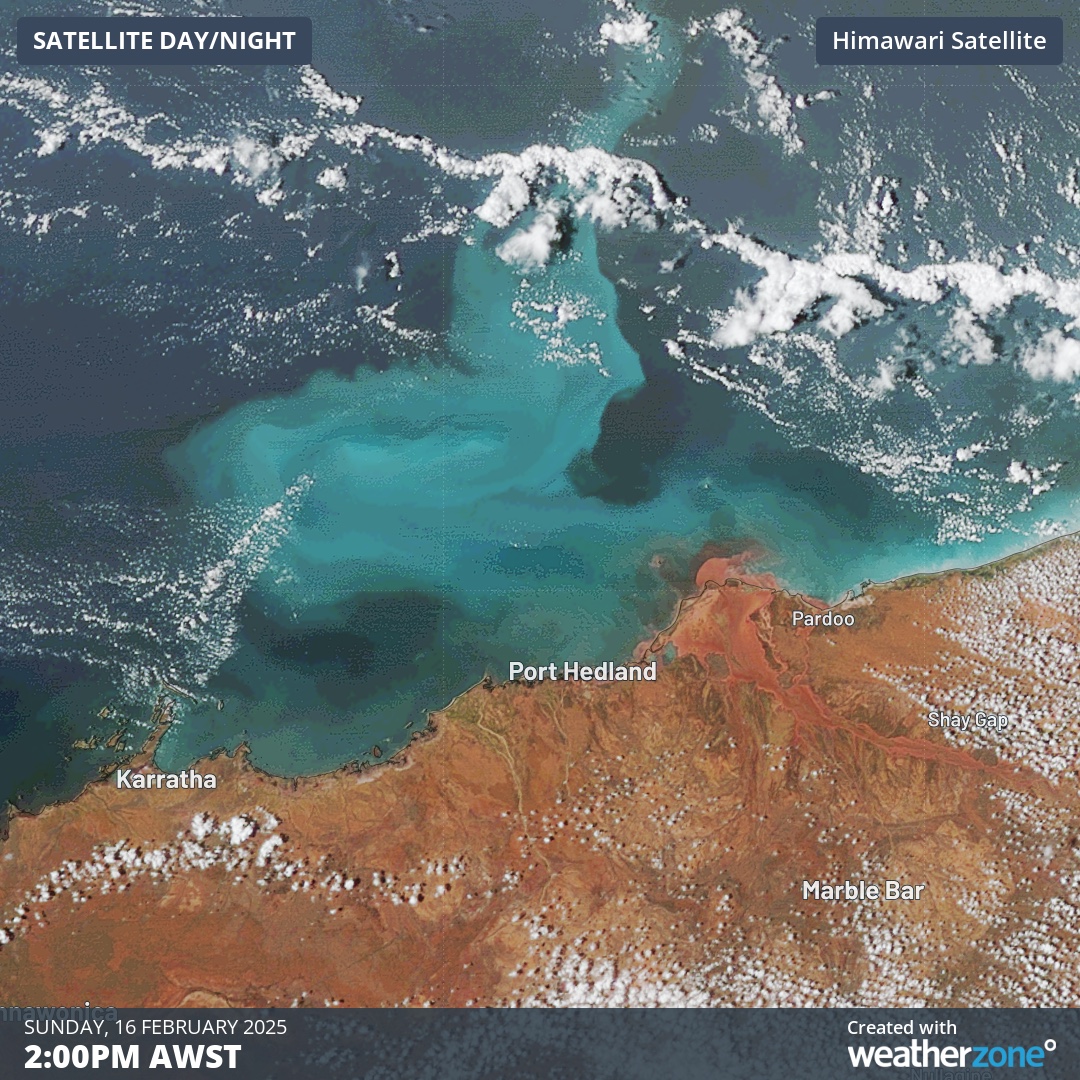Huge algal bloom spotted near WA's Pilbara coast
Satellite images have revealed a massive algal bloom and red floodwaters to the north of WA’s Pilbara coast in the wake of Severe Tropical Cyclone Zelia.
Port Hedland and surrounding areas of WA’s Pilbara coast withstood the full force of Severe Tropical Cyclone Zelia as the system made landfall near the De Grey River mouth last Friday afternoon.
The powerful cyclone dumped more than half a metre of rain over parts of the Pilbara and caused widespread flooding, with the De Grey River still experiencing major flooding on Monday morning.
The De Grey River discharges into the Indian Ocean and when it floods, iron-rich sediment can often be seen spreading into the ocean’s turquoise water. The satellite images below, which were captured on Sunday, show this earthy discharge oozing out of the De Grey River into the Indian Ocean.

Image: Floodwaters carrying sediment out of the De Grey River into the Indian Ocean.
But this sediment outflow wasn’t the only thing Zelia changed about the appearance of the ocean near the Pilbara Coast. Zooming a little further out on the satellite images from the past couple of days also reveals what appears to be a huge algal bloom to the north of Port Hedland.
Strong tropical cyclones have been known to trigger algal blooms, particularly when their powerful winds churn up sediment in relatively shallow coastal water columns, bringing cold and nutrient-rick water towards the surface. The heavy rain and associated surface runoff they cause can also help to produce algal blooms.
Satellite images from the days before Tropical Cyclone Zelia developed show no significant algal bloom to the north of Port Hedland. On Saturday, February 15, one day after Zelia made landfall, a huge algal bloom could be seen in Zelia’s wake. The algal bloom stretched around 300 km across the surface of the ocean on the weekend, in the same region where Tropical Cyclone Zelia rapidly intensified last week.

Image: Algal bloom to the north of WA’s Pilbara Coast on Sunday, February 16, 2025.
A similar algal bloom occurred off the Pilbara Coast in the wake of Tropical Cyclone Veronica back in March 2019.